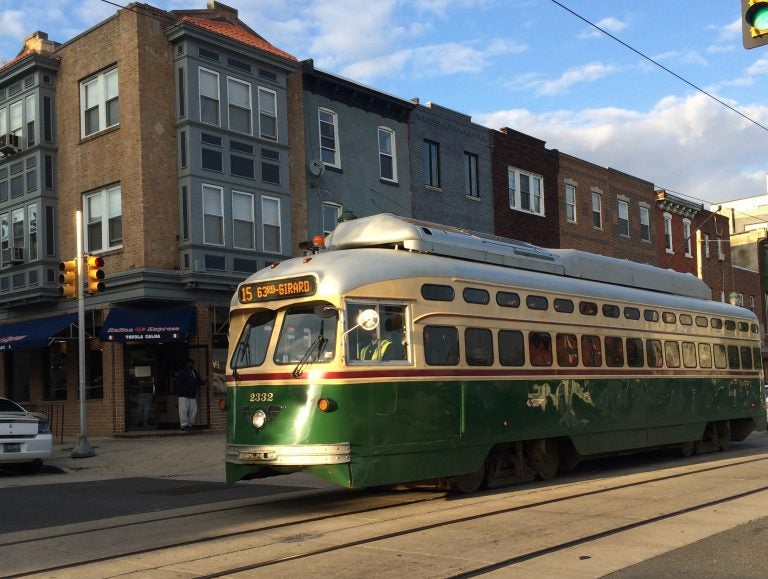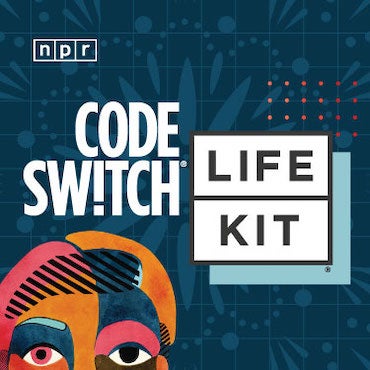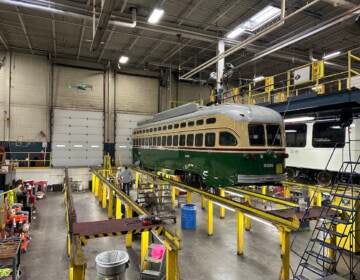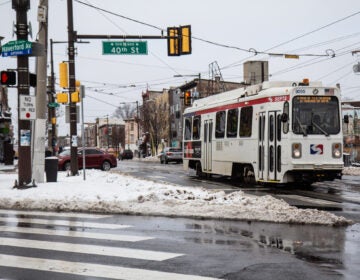SEPTA taking Girard Ave. trolley off the rails; 78 percent of fleet can’t pass inspection
The iconic trolley cars that have crisscrossed most Girard Avenue for nearly 15 years are going away for upwards of 18 months.

SEPTA's Route 15 trolley. (PlanPhilly)
The iconic trolley cars that have crisscrossed most of Girard Avenue for nearly 15 years are going away for upwards of 18 months.
SEPTA officials said Tuesday that buses will replace the trolleys along the entirety of Route 15, starting Sunday. The route, which runs from Port Richmond to Haddington, is the transit agency’s sole remaining surface trolley line.
Scott Sauer, SEPTA’s assistant general manager of operations, blamed multiple PennDOT highway construction projects for the interruption, which have already led to bus substitution along the eastern portion of the trolley line, near Interstate 95.
“Sometime in the late winter or early spring PennDOT is also going to be taking out a bridge over the CSX railroad, near where I-76 comes by Girard Avenue,” Sauer said. “So we would have had to go bus only anyway…but the bus is [a] temporary measure.”
However, maintenance issues also play a role in the agency’s decision. Sauer said that just four out of 18 of the route’s 1940s-era cars are in a state of repair needed to pass internal mechanical inspections. While he offered no single explanation for the poor condition of the fleet, he noted problems with rusted chassis and other issues with the 73-year-old car bodies.
Sauer described the 12- to 18-month service interruption as a chance to bring the PCC II cars back to a state of good repair.
“We’re trying to take advantage of this opportunity to take a look at the cars and see what we need to do to get them back running on that line,” he said.
Sauer said SEPTA had notified operators of the change but acknowledged the agency had not notified the general public. More than 8,200 riders on average use the route each day, according to a June 2019 SEPTA report.
“That’s where we missed it,” he said, of public notice. “But the timetables won’t change. The actual service people will get is not changing.”
Fears of losing another trolley line
Trolley service on Girard Ave. was first suspended in 1992, as part of a series of controversial SEPTA budget cuts, and the line has faced a rocky journey ever since.
More than 100 cars were taken out of regular service on Route 15 and two other legacy surface routes –– Erie Avenue’s Route 56 and the lengthy Route 23, which cut a 13-mile course across the city –– following the 1990s-era budget cuts. Buses and trackless trolleys replaced these vehicles, although SEPTA officials asserted at the time that they planned to restore service on all three lines using modern “light rail vehicles” by 1996.
Ultimately, regular trolley service returned only to the 8.2 mile-long Route 15, the shortest of the trio, following years of political pressure from figures like former Governor Ed Rendell.
However, rather than acquiring modern light rail vehicles, SEPTA eventually opted to rebuild 18 historic cars similar to those that had long plied the route, at a cost of some $88 million. The current green-and-tan cars returned to Girard in 2005, nearly a decade later than first promised.
Joe Coccio, secretary-treasurer with the Transit Workers Union Local 234, which represents most of SEPTA’s drivers and other blue-collar workers, blamed the current suspension on both deferred maintenance and the broader delay of SEPTA’s trolley modernization plans.
“The fleet has been plagued by serious rust issues in critical safety-sensitive areas since the cars were rebuilt,” Coccio said. “These issues have gotten progressively worse due to their own neglect and thinking that new trolleys would have been purchased by now.”
Officially, SEPTA maintains that it is still planning to spend at least $1.3 billion on a modernization project that would bring 21st century light rail vehicles to five subway-surface trolley lines in West Philadelphia and Route 15. This plan would see the installation of more raised platforms along routes and swap older cars in favor of larger, ADA-accessible vehicles featuring multi-door boarding and deployable ramps.
While light rail service is costlier to operate than bus service, a June 2019 study of Route 15 from the Delaware Valley Regional Planning Commission found that “modern trolleys can offer significant travel time savings within the study area, and even greater travel time savings when prioritized in a dedicated right-of-way.”
Still, some riders fear the failure to restore other surface lines cut in the 1990s and the repeated disruptions to the Route 15, including the impending suspension, could spell the end of trolley service along Girard Avenue.
While SEPTA officials assured riders the trolleys will return, the transit advocacy group 5th Square launched a petition preemptively demanding their restoration. Ben She, a 5th Square transit advocate, also worried that “since the buses are smaller than the trolleys, there might be risk of overcrowding if service gets too unreliable with the buses.”
With ridership in the city on a downward trend, She also said running buses on the line created a “precarious situation” for the authority.
“Causing more disruption doesn’t help” falling ridership, She said. “SEPTA needs to find stability and continue improvements for the line.”
Further, in 2018, the authority commissioned transit consultant Jarrett Walker to author a bus optimization report that recommended abandoning Route 15 trolley service in favor of a high-frequency bus line, among other findings. The report cited the streetcars’ inability to bypass double-parked cars and other obstacles in narrower portions of the route.
Sauer insisted these fears were overblown and pointed out that the agency was in the process of restoring a trolley loop and tracks on the eastern portion of Route 15 that had been disrupted by I-95 construction.
“They’ll be back. I get it, I’m a trolley guy, too. I know how people feel about them,” Sauer said. “This is Philadelphia and we love our trolleys.”
Yet fans of the refurbished World War Two-era trolley cars, unique among SEPTA’s fleet of vehicles, weren’t taking any chances. Some users on the Philadelphia Metropolitan Area Transit Scene Facebook group posted videos depicting themselves taking “last rides” on the Route 15 cars.
“Hopefully a few go to trolley museums,” wrote Douglas Diehl, a group administrator.
WHYY is your source for fact-based, in-depth journalism and information. As a nonprofit organization, we rely on financial support from readers like you. Please give today.







